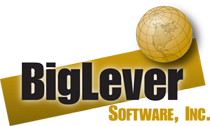You’ve had a chance to listen to some great presenters, and now we have our panel discussion – Welcome to the New Digital Age: How Can Well-modeled Processes be the Red Carpet to Confidently Adopt and Scale-up Digital Engineering Practices?. We have Dr. Erich Meier, CTO from Method Park, as the moderator, and the panelists include:
- Katie Mehta is the Chief Architect of the Center of Excellence for Product Line Engineering at Northrop Grumman’s Mission Systems Sector. The COE’s mission is to help programs within Northrop Grumman successfully adopt PLE and digital engineering.
- Randy Pitz is an Associate Technical Fellow and Product Line Engineering champion across The Boeing Company, where he provides guidance and experience to interested programs.
- Paul Clements is Vice President of Customer Success at BigLever, where he works to help organizations successfully adopt PLE and maximize their benefit from it. He has been an ardent advocate of PLE for over 25 years.

Process is where big ideas turn into actionable work. Product Line Engineering in the New Digital Age is all well and good, but if its foot soldiers who carry it out on a daily basis don’t know what to do, right now, today, and what they need in order to do it, and who they give it to after they’ve done it, then all the hype remains hype. This panel featured three people with the same mission statement. Some of the interesting points to listen for include:
- Seeing process as a product line in its own right — different group need different processes, but it makes no sense to spawn off almost-alike copies. Why not a product line of processes?
- Applying process discipline not just to engineering, but to the problems of organizational change and adoption
- The importance of digital engineering and PLE to legacy systems that may be decades old: How do we update their processes and technologies while still ensuring an absolutely commitment to safety?
The discussion about the ideal work environment in a process-enabled digital engineering/PLE space includes some of the more visionary thoughts of the session: Achieving a holistic system vision throughout the organization, from customer to leadership to engineering, while still supporting a-day-in-the-life activities of each stakeholder; being able to see the instantaneous ramifications of a design decision to stakeholder concerns; and the importance of eliminating duplication of effort while achieving first-time quality.
Overall, this is a session with three people in dramatically different organizations that nevertheless share a steadfast belief in a vision for a new engineering future. It doesn’t get more interesting than that. Watch the whole panel discussion here.
